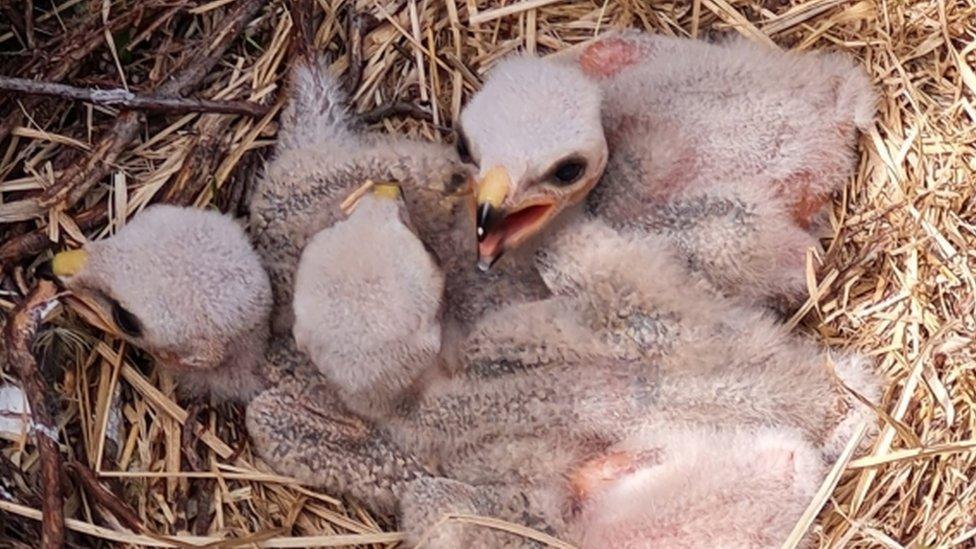The National Trust have had a successful year breeding hen harriers
- Published
- comments

The National Trust say that this year has been their most successful for breeding rare hen harriers in the Peak District for more than a decade.
Seven hatchlings have successfully fledged from multiple nests on National Trust land in the High Peak.
Craig Best, general manager of the National Trust in the Peak District, said: "A great deal of work has gone into encouraging more breeding pairs of these majestic birds to the Peak District, so this is brilliant news.
It follows a project in the area to improve the environment, to encourage the birds to return.
How are the National Trust boosting the number of hen harriers?
Hen harriers eat wildlife such as small mammals.
The Trust said to make sure there is room for the wildlife that the birds eat, they have to encourage a more diverse range of moorland plants to attract those animals into the area.
To do this they cut have been cutting back heather - a purple flowered plant that grows on the moorland.
Craig Best said: "The presence of the birds indicates a plentiful and healthy food source, which shows the work we have done so far to improve the landscape is starting to provide ideal conditions for different species to thrive."
Where do hikers come in?
To help monitor the young birds' progress, they have been fitted with tracking tags by the RSPB and Natural England.
Mike Price, from the Peak District Raptor Monitoring Group, said: "Now the birds have fledged, the birds will face further threats, so we need to continue to work together to remain vigilant and do all we can to protect them."
Visitors and residents can do this by staying on footpaths and keeping dogs on leads during the ground nesting season from the beginning of March to the end of July.
The Trust says this will help with conservation efforts for the birds.
Five fantastic facts about hen harriers!
1. Female hen harriers are known as 'ringtails'.
2. They like to eat rodents and other small mammals such as voles, mice, and squirrels.
3. Their scientific name is Circus cyaneus.
4. On average female hen harriers weigh 500g, larger than males that typically weigh 350g.
5. The average lifespan of a hen harrier is 7 years.
